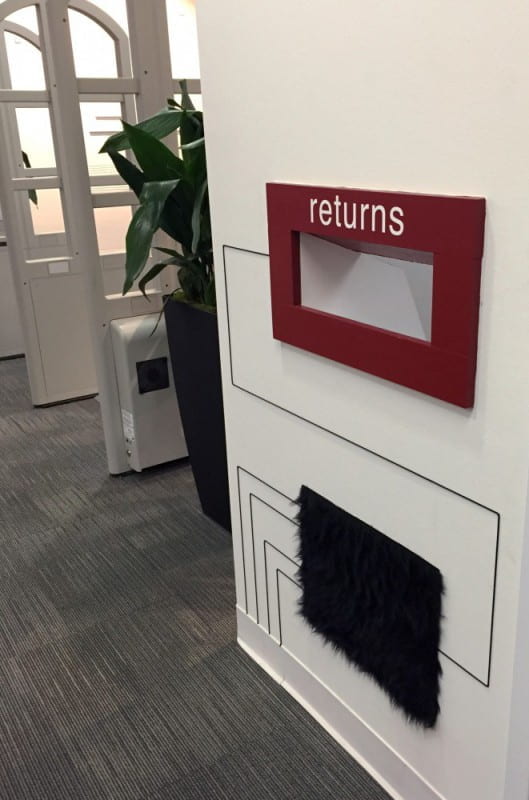In a memorable scene set in a hotel room in the film, Apocalypse Now, Captain Benjamin Willard, experiencing a fit of delirium, smashes a mirror with his fist and then smears the blood from his wounded hand on his face. The interrelated themes of transformation and recognition introduced in this scene, through the symbol of the mirror and the blood-obscured visage, appear in ancient art as they do throughout western popular culture, underscoring the significance of the transformative effects of war on the body and the psyche of the individual.
In the Odyssey, for instance, the dog Argos, who recognizes his master disguised in rags, is often read as a signifier of faithfulness; however, Argos may be read alternatively as a means of addressing the issue of selfhood in the context of trauma. As part of the cycle of twelve paintings in the Travels in Ithaca exhibition, library patrons returning books to circulation will encounter a small geometric representation of Argos waiting faithfully beneath the Book Return slot. Rendered in faux fur and nylon tactical cord, Argos combines basic formal elements, lines and a single planar element, in a dispersed, site-specific composition designed to stimulate disciplined eye movements consistent with the EMDR trauma therapy method. The site and materials challenge the boundaries between painting, sculpture, and architectural ornament, while the content disrupts assumptions about abstract art’s capacity to be illustrative, humorous, ironic, symbolic, political, or utilitarian. In addition to highlighting the transformative nature of the combat experience at the level of thoughts and memories, Argos also reflects new medical knowledge about the long-term effects of Traumatic Brain Injury on personality and behavior.
The Return: Argos Recognizing His Master in Rags (EMDR Visual Aid), 2016
Faux fur, nylon utility cord, tacks
45 x 37 inches
Thanks to Scott Gleeson for this guest blogpost!
Image by Mariza Morin.
